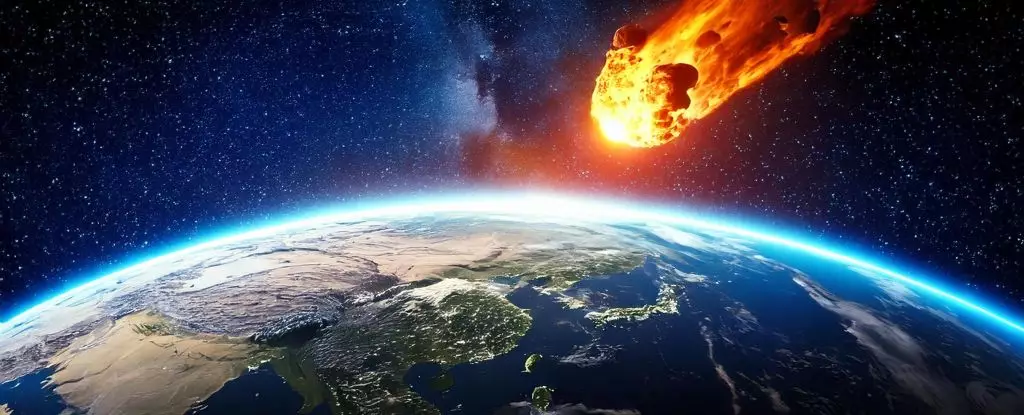The image of a massive asteroid hurtling toward Earth may seem like science fiction, yet it represents a real threat that humanity needs to grapple with. Research and simulations exploring the potential impact of an asteroid the size of a hill have underscored the importance of understanding not just the immediate effects of a collision but also the long-lasting implications that could alter the fabric of life on Earth. As we progress further into the 21st century, one such threatening cosmic object is asteroid Bennu. Despite the odds appearing slim—1 in 2,700, or 0.04 percent—that it might collide with Earth in 2182, the need for vigilance and preparedness remains paramount.
Earth has a tumultuous history characterized by asteroid impacts that have shaped its geological and biological evolution. Perhaps the most notable instance is the Chicxulub impact, which occurred approximately 66 million years ago and reputedly spurred the extinction of the dinosaurs. Though Bennu is only 500 meters (1,640 feet) in diameter compared to Chicxulub’s massive 10 to 15 kilometers, its potential to wreak havoc should not be underestimated. Scientists, including climate experts Lan Dai and Axel Timmerman from South Korea’s Pusan National University, have modeled the consequences of a Bennu impact. Their simulations show that an impact could inject upwards of 400 million tons of dust into the atmosphere, leading to severe climatic repercussions.
As outlined by Dai and Timmerman, a potential collision would result in a dramatic decrease in global temperatures by approximately 4 degrees Celsius as well as a 15 percent reduction in precipitation. The researchers utilized the Aleph supercomputer to simulate the environmental aftermath of such a disaster, focusing on terrestrial and marine ecosystems—a noteworthy aspect that previous studies typically overlooked.
While the immediate destruction from an asteroid impact may be catastrophic, the aftermath—the so-called “impact winter”—is likely to have far-reaching consequences, including atmospheric chemistry disruption and significant ozone layer depletion (32 percent). Such degradation may hinder photosynthesis, vital for sustaining life on Earth, thus threatening global food security and pushing ecosystems to their limits.
The disruption caused by an asteroid impact poses a significant risk to both terrestrial and marine ecosystems. Studies indicate that these adverse climatic conditions could result in an initial reduction of about 20 to 30 percent in photosynthesis across the board. This decline in plant growth could trigger a cascade of failures in the food chain, affecting not just humans but countless species that rely on plants for sustenance.
Interestingly, not all species would suffer equally. The research showed that certain types of marine algae would rebound quite rapidly, recovering within months due to an influx of nutrients such as iron, which may become available from the disintegration of the asteroid and ejected Earth material. This unintended consequence hints at a complex web of ecological interactions that could, in time, provide a glimmer of hope for food security in the wake of an asteroid impact.
Looking back through Earth’s geological record, it is clear that asteroid impacts are not anomalies. While the precise frequency of such cosmic events is challenging to determine, estimates suggest that medium-sized asteroids could collide with Earth about every 100,000 to 200,000 years. Such occurrences raise the concern that our ancestors likely endured similar upheavals, potentially influencing human evolution itself.
Although an asteroid threat looms, the prospect of human resilience emerges as a profound lesson from history. Should Bennu or a similar asteroid collide with Earth, humanity might survive, albeit in smaller numbers and with a drastically altered way of life. Understanding our vulnerability can prompt us to devise strategies for adaptation and survival.
The complexities associated with asteroid impacts compel scientists to advocate for continued research and monitoring of near-Earth objects. Drawing from historical data and contemporary simulations, a multi-faceted approach is necessary—encompassing advanced technology, public policy, and international cooperation—to develop effective strategies for potential asteroid mitigation.
Engaging with the cosmic threat of asteroids such as Bennu is crucial, not simply for the sake of science but for the preservation of life on Earth. While some aspects of this threat remain disconcerting, the adaptability of ecosystems and humanity’s resilience offer pathways toward a more secure future, illuminating the importance of preparedness in the face of uncertainty.

